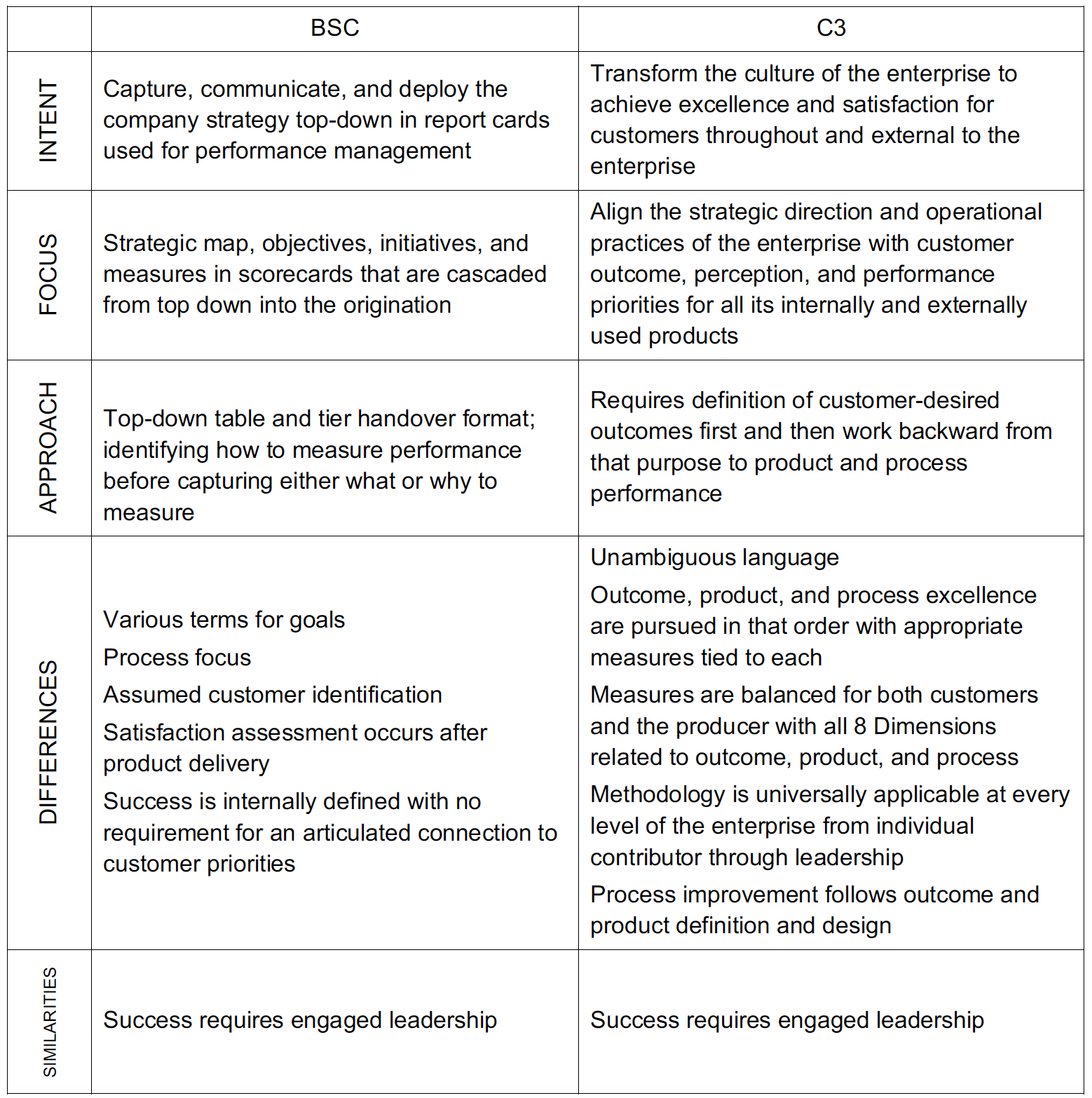Balanced Scorecard and C3
Chapter 25 from Mastering Excellence: A Leader’s Guide to Aligning Strategy, Culture, Customer Experience & Measures of Success
Written by Michael Melton
Three questions I have found the need to answer repeatedly for management include these: Where does the quality management system (QMS) begin? Is the strategic plan included in the QMS? What is leadership’s role with both?
My answer is that top management produce products that represent the VOL. These include specific statements (mission vision, values, strategy, directives, and core policies) that establish the direction and the culture of the organization. So, yes, the strategic plan is in the QMS. The quality of the VOL products along with top management’s participation and application of those products establishes the quality of the culture.

Michael Melton
General Manager, Quality Assurance Liebherr Mining Equipment Co.
Effective Leadership Products
It is common practice for organizations to evaluate their products and core process for effectiveness. However, evaluating VOL products and the culture that results from them is uncommon. One of leadership’s jobs is to eliminate ambiguity in strategy and clearly communicate VOL. I’ve used various strategic planning, deployment, and evaluation methods over the years. Of all methodologies, two are structured and at a glance seem to offer a comprehensive and robust framework. The methodologies are the Balanced Scorecard (BSC) and C3. The differences become evident with deeper review.
The Balanced Scorecard (BSC) Strategic Planning Process
The BSC is a methodology that is intended to link strategy with operational performance. BSC is a tool, not a system. It is a series of report cards that show areas or processes that an organization determines relevant for performance management. The term “balance” suggests that objectives and measures, assembled together on one sheet or scorecard, offer a comprehensive view of organizational direction. Scorecards typically focus only on subjects of internal interest. The customers’ interest areas are inadequately integrated into the grand scheme. The BSC can sometimes suffer from identifying how to measure performance before defining either what or why to measure. The BSC linearly cascades top management objectives to mid-management and then to the individual contributors. The BSC linear approach typically assigns customer satisfaction to a specific department. That silo then owns it, and other departments may or may not have customer satisfaction as a focus. Internal customer outcomes are not included in planning with this approach.
The BSC top management (Tier 1) scorecard cascades to department (Tier 2) scorecard that immediately narrows into process (not outcome) focus. Process focus fails to determine what the internal produced products or the desired outcomes are. BSC doesn’t require subordination or alignment to VOL directives such as mission, vision, and values. Objectives can exist that conflict with company values and conflict with other objectives. As a default, BSC may consider your customers but does not factor in other key performance indicators, such as your competitors or changes to your business environment. This may lead to an overemphasis on internal processes instead of outcomes.
Scorecards can be developed tier-by-tier in silos. If something is incorrect or ambiguous in Tier 1, it gets processed in Tier 2 without validation or correction. This forces departments to address only handed down topics. Customers, internal and external, can be completely ignored. The BSC terms of pillars, themes, imperatives, objectives, and initiatives are confusing and routinely morph and appear differently in the various tier documents. This easily creates confusion.
C3 Strategic Plan Methodology
C3 is an integrated system. The purpose of C3 is to change the culture so strategic direction is aligned with customer priorities. The strategy of C3 is to ask and answer:
- What do you do?
- Who do you do it for?
- What do they want?
- How can we dramatically improve their satisfaction and our performance?
- What is the strategy and process for transforming the culture?
C3 uses an 8DX framework to ensure the business matrix and the customer are in scope at all times. Said another way, C3 is respectful that corporate goals and customer outcomes exist and must be considered simultaneously. C3 clarifies a path that begins with outcomes and products before focusing on processes. C3 captures customer expectations, mission, vision, and values prior to cascading goals into the organization. C3 defines the critical products and success measures for those products. It connects and weighs the company mission, vision, values, and customers’ outcomes in each product and KPI decision. VOL commitments are included in evaluating success. This is a major difference between C3 and BSC.
C3 creates superordinate and subordinate outcomes, thus enabling prioritization. C3 has simultaneous external and internal vision. C3 uses unambiguous terms such as outcome instead of BSC terms of pillars, themes, imperatives, objectives, and initiatives. Outcomes are relevant to all products, including VOL products. C3 front-loads the strategic planning process, connecting customer expectations and prioritizing corporate goals. It requires that the organization defines success for the products they produce both internally and externally. C3 seamlessly and consistently references and cross-checks outcomes and products so alignment remains true and robust.
Conclusion
Comparing C3 and the BSC may seem peculiar at first glance. One is a system; the other is a methodology of measurement categories. C3 methodologies, concepts, and tools focus on outcomes and customer satisfaction. The BSC focus is on a set of tables (cards) to capture strategic objectives and initiatives.
The C3 methodology applies cultural behavior, while BSC is more of a hand-over process approach. A Tier 1 BSC can be developed by top management and handed off in a form that is ambiguous and not aligned with customer-desired outcomes. The company mission and values may not be aligned with outcomes or included in a planned evaluation methodology. The Tier 2 will follow within the parameters set forth by the VOL Tier 1. Hence, Tier 2 doesn’t include VOL. A C3 strategic plan results in VOL quality (shared C3 strategy). C3 includes VOL commitments in evaluating success.
